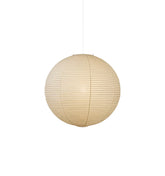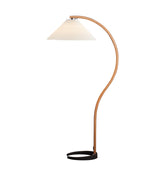Global Voltage Guide: Find Your Country's Standard | Yiarolight
Global Voltage Guide: Find Your Country's Standard | Yiarolight
Navigating the world's different electrical systems can be confusing. Did you know that a beautiful chandelier designed for European markets could malfunction in an American home? Understanding voltage standards is essential when selecting lighting fixtures and appliances. This comprehensive guide explains everything you need to know about voltage, frequency, and plug types across major countries.
Why Voltage Compatibility Matters
Electricity isn't universal. Most countries use either:
-
110-120V systems (primarily in North America)
-
220-240V systems (common in Europe, Australia, and Asia)
Using incompatible voltage can damage your lighting fixtures, create safety hazards, and void warranties. This guide helps you make informed decisions when shopping for international products.
1. North American Electrical Standards: United States & Canada
Understanding the electrical specifications in North America is crucial for anyone purchasing lighting fixtures or appliances for use in this region. The standard electrical system operates at 120V with a frequency of 60Hz, creating a distinct power environment that differs significantly from many other parts of the world.
Detailed Technical Specifications:
-
Operating Voltage: 120V AC
-
System Frequency: 60Hz
-
Primary Plug Types:
-
Type A: Two flat parallel pins (ungrounded)
-
Type B: Two flat parallel pins with a round grounding pin
-
Important Considerations:
-
For International Visitors: If you're bringing devices from Europe or Asia (typically 220-240V), you'll need a step-down transformer to safely operate them in North American electrical systems.
-
Dual-Voltage Solutions: Some modern LED lighting systems and electronic devices support dual-voltage operation (110-240V). Always check the product specifications before connecting to power sources.
-
Safety Compliance: All electrical products sold in North America must meet stringent safety standards such as UL (United States) and CSA (Canada). Yiarolight products are certified to meet these requirements, ensuring complete peace of mind for our customers.
European electrical systems present a different set of specifications that must be carefully considered when selecting lighting fixtures and appliances. The region predominantly uses 220-240V systems with a 50Hz frequency, creating a higher voltage environment than North America.
Detailed Technical Specifications:
-
Operating Voltage: 220-240V AC
-
System Frequency: 50Hz
-
Primary Plug Types:
-
Type G: Three rectangular pins (United Kingdom, Ireland, Malta)
-
Type F: Two round pins with grounding clips (Germany, France, Netherlands, etc.)
-
Type E: Two round pins with female grounding (France, Belgium, Poland)
-
Type C: Two round pins (ungrounded, compatible with E/F sockets)
-
Reginal Variations and Compatibility:
While the voltage remains consistent across most European countries, plug types vary significantly. The United Kingdom and Ireland stand out with their unique Type G plugs, while continental European nations predominantly use Types E and F. Italy has its own specific variations with Type L plugs, though most modern installations also accept Type C plugs.
Safety and Compatibility Warnings:
-
Never connect North American 120V devices directly to European 230V outlets without proper voltage transformation
-
Using incompatible voltage can cause immediate damage to lighting components and create fire hazards
-
Always verify both voltage compatibility and plug type requirements for your specific country
Professional Recommendation:
For permanent lighting installations in European properties, we recommend consulting with local electricians who understand regional wiring standards and can ensure proper installation of your Yiarolight fixtures according to local electrical codes.
Both regions have distinct electrical characteristics that must be respected to ensure the longevity and safety of your lighting investments. Yiarolight provides region-specific products to guarantee optimal performance wherever you're installing our lighting solutions.
International Voltage Reference Chart
| Country | Voltage | Frequency | Plug Type |
|---|---|---|---|
| United States | 120V | 60Hz | A, B |
| Canada | 120V | 60Hz | A, B |
| United Kingdom | 230V | 50Hz | G |
| Germany | 230V | 50Hz | C, F |
| France | 230V | 50Hz | C, E |
| Italy | 230V | 50Hz | C, F, L |
| Australia | 230V | 50Hz | I |
| Japan | 100V | 50/60Hz | A, B |

Understanding Dual-Voltage Devices
Many modern electronics feature dual-voltage capability, allowing them to operate safely across different electrical systems worldwide. You can identify these versatile devices by labels reading "100-240V, 50-60Hz," indicating they automatically adapt to voltages from 100V to 240V without requiring a transformer.
Common dual-voltage items include:
- Smartphones and laptops
- Camera battery chargers
- USB-powered devices
- Modern personal care appliances
While these devices handle voltage variations independently, you'll still need a plug adapter to physically connect them to different wall outlets. For example, when traveling from the U.S. to the UK, your dual-voltage laptop will work perfectly with a simple Type G plug adapter.
However, it's important to understand that most permanent lighting fixtures—including chandeliers, wall sconces, and built-in LED systems—typically operate on fixed voltages. At Yiarolight, we manufacture region-specific versions of our lighting products to ensure optimal performance and safety in local electrical environments.
Before purchasing any electrical product, always verify its voltage specifications. For dual-voltage portables, a plug adapter suffices. For fixed installations like lighting, choose products specifically designed for your country's voltage standard.
Need help selecting the right lighting for your region? Contact Yiarolight—we'll ensure you get perfectly compatible fixtures for your location.
- 110V 120V 220V 240V
- country voltage chart
- dual voltage lighting
- electrical compatibility
- electrical frequency
- electrical standards
- European voltage
- global voltage
- international lighting
- international voltage
- lighting electrical requirements
- lighting fixture compatibility
- lighting installation guide
- lighting safety
- plug types
- US voltage standards
- voltage by country
- voltage converter guide
- voltage guide
- world voltage standards


































